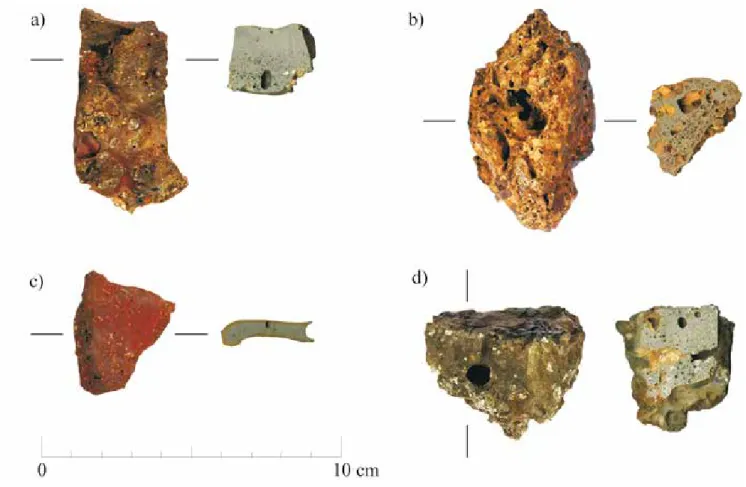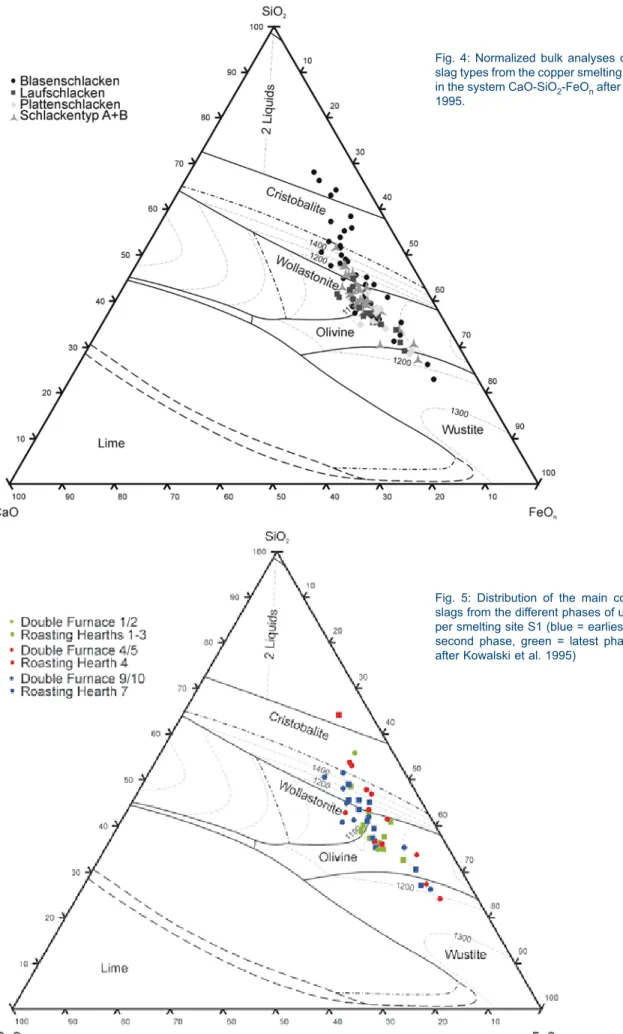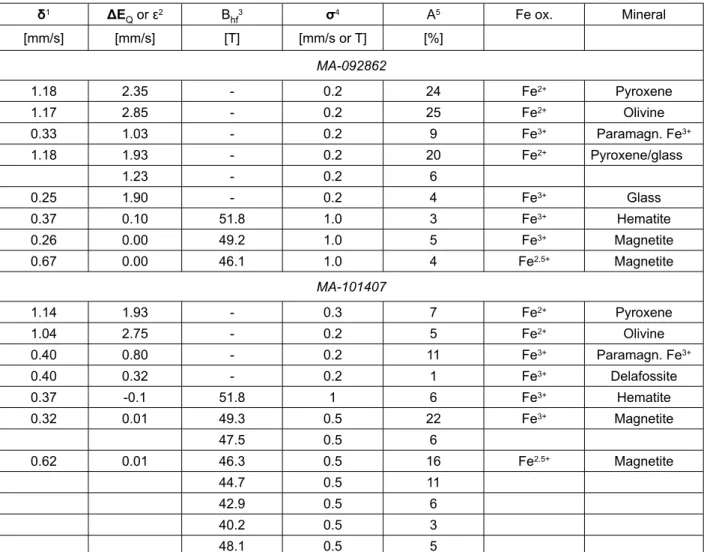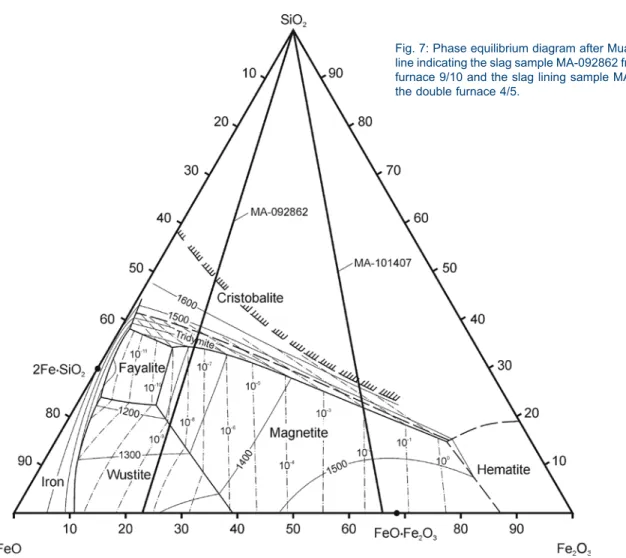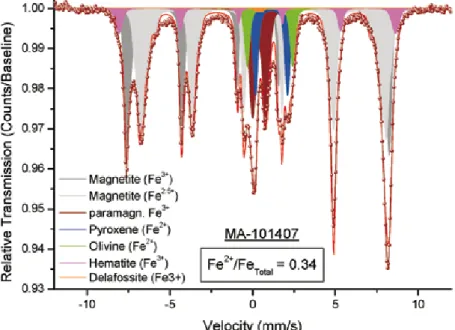Archaeometallurgy in Europe III
Z E I t s c h r I f t f ü r K u n s t u n d K u l t u r I m B E r g B A u
BEIhEft 26
Archaeometallurgy in Europe III
Andreas hauptmann
diana modarressi-tehrani
BEIhEft 26
Editors
Andreas Hauptmann
Diana Modarressi-Tehrani
Bochum 2015
Archaeometallurgy
in Europe III
Proceedings of the 3
rdInternational Conference
Deutsches Bergbau-Museum Bochum
June 29 – July 1, 2011
DER ANSCHNITT
Herausgeber:
Vereinigung der Freunde von Kunst und Kultur im Bergbau e.V. Vorsitzender des Vorstands:
Prof. Dr. Karl Friedrich Jakob Vorsitzender des Beirats:
Bergassessor Dipl.-Kfm. Dr.-Ing. E.h. Achim Middelschulte Geschäftsführer:
Museumsdirektor Prof. Dr. rer. nat. Stefan Brüggerhoff Schriftleitung:
Dr. phil. Andreas Bingener M.A. Editorial Board:
Prof. Dr. Stefan Brüggerhoff, Dr. Lars Bluma, Dr. Michael Farrenkopf, Prof. Dr. Rainer Slotta, Dr. Thomas Stölllner Wissenschaftlicher Beirat:
Prof. Dr. Jana Gersˇlová, Ostrava; Prof. Dr. Karl-Heinz Ludwig, Bremen; Prof. Dr. Thilo Rehren, London; Prof. Dr. Wolfhard Weber, Bochum
Anschrift der Geschäftsführung und der Schriftleitung: Deutsches Bergbau-Museum Am Bergbaumuseum 28 - D-44791 Bochum Telefon (02 34) 58 77-0 Telefax (02 34) 58 77-111 Einzelheft 9,– €, Doppelheft 18,– €; Jahresabonnement (6 Hefte) 54,– €;
kostenloser Bezug für die Mitglieder der Vereinigung (Jahres-Mitgliedsbeitrag 50,– €)
Montanhistorische Zeitschrift Der ANSCHNITT. Beiheft 26
= Veröffentlichungen aus dem Deutschen Bergbau-Museum Bochum, Nr. 202
Cover
Domus Vettiorum / Casa dei Vettii, Pompeii (Campania, Italy, 63-79 BC), which was excavated in 1894. Section of a Pompeii-style scenic fresco showing Erotes and Psyches in a gold assay laboratory. In the left corner, scales for weighing gold are put on a table. Next to it, one of the Erotes is working with a small hammer on an anvil. On the right side, an assay furnace is shown. Ano-ther of the Erotes is holding a small crucible with pincers with the right hand while using a blowpipe with his left hand, supplying the fire with air. The large bellow for the assay furnace is driven by the third of the Erotes.
Redaktion
Diana Modarressi-Tehrani, Andreas Hauptmann
Layout
Rolf Krause
Titelgestaltung
Karina Schwunk
Druck
Grafisches Centrum Cuno GmbH & Co. KG
Bibliografische Informationen der Deutschen Bibliothek
Die Deutschen Bibliothek verzeichnet diese Publikation in der Deutschen Nationalbibliografie; detaillierte bibliografische Daten sind im Internet über http/dnd.ddb.de abrufbar.
ISBN 10: 3-937203-74-5 ISBN 13: 978-3-937203-74-4
The conference Archaeometallurgy in Europe III was supported by Keyence Analyticon MLS GmbH Zeiss Thermo Scientific
Springer Verlag Berlin Heidelberg New York
Archaeometallurgy
in Europe III
Scientific Advisory Board
Gilberto Artioli, Universitá di Padova, Italy
Roland Gauß, Fraunhofer-Institut für Silicatforschung, ISC, Alzenau
Alessandra Giumlia-Mair, Merano, Italy
Gert Goldenberg, University of Innsbruck, Austria Sabine Klein, J.W. Goethe University of Frankfurt/ Main, Germany
Marcos Martinon-Torres, University College London, United Kingdom
William O’Brien, University of Galway, Ireland Vincent Serneels, University of Fribourg, Switzerland
Standing Committee
Yannis Bassiakos, Athens, Greece Alessandra Giumlia-Mair, Merano, Italy Andreas Hauptmann, Bochum, Germany Ivelin Kuleff, Sofia, Bulgaria
Susan LaNiece, London, United Kingdom Ignacio Montero, Madrid, Spain
Local Organizing Committee
Michael Bode Andreas Hauptmann Diana Modarressi-Tehrani Michael Prange
This volume comprises a range of articles, which were submitted and selected from all the presentations given on the International Conference ”Archaeometallurgy in Europe III”, held from the 29th of June to 1st of July 2011 at the Deutsches Bergbau-Museum Bochum, Germany. The present volume is the third in the series “Archaeo-metallurgy in Europe” , capturing the spirit of the suc-cessful series of international conferences on this special theme of research. The first conference “Archaeometal-lurgy in Europe” had been organized by the Associazi-one Italiana di Metallurgia and took place in Milano, Italy, from the 24th to the 26th of September 2003. The second conference was held in Aquileia, Italy, from the 17th to the 21st of June 2007. It was also organized by the Associazione Italiana di Metallurgia.
The splendid idea to launch this conference series, a scientific series of meetings limited to the countries of Europe, came from the late Prof. Dr. Walter Nicodemi, formerly President of the Assoziazione Metallurgia di Italia. Thanks to the efforts of Dr. Alessandra Giumlia-Mair, Merano, these conferences have developed into increasingly productive events with a high scholarly qua-lity. Since then three conferences have taken place and the fourth meeting is at an advanced stage of prepara-tion and will take place in Madrid, Spain, from the 1st to the 3rd June 2015.
The title of the conference series covers a research field which is a distinctive part of archaeometry, and which so far was usually included as one of the topics in the program of the “International Symposium on Archaeo-metry” (ISA), organized every third year at different lo-cations in Europe and in the United States.However it is our opinion, that in the last decade archaeometallurgy has developed as a very important research field, and we are observing a large number of scholarly activities all over the world. We are convinced that such an im-portant topic needs to be organised and presented in conferences specifically dedicated to this field. Therefo-re the topic of this confeTherefo-rence is the history of metals and metallurgy primarily in Europe, but it also includes other regions of the Old World.
The future prospects of the conference series are pro-mising, especially because “Archaeometallurgy in Euro-pe” constitutes an extremely useful broadening and a regional counterpoint to the well-established and suc-cessful conference series “The Beginnings of the Use of Metals and Alloys” (BUMA), which was launched in
1981 by Professors Tsun Ko, Beijing, China, and Robert Maddin, then Philadelphia, USA. The focus of the eight BUMA conferences held so far (the last one was held in Nara, Japan, in 2013) lays on the development of metallurgy in South-East Asia and the Pacific Rim. We firmly belief that the two conferences complement each other very effectively and should therefore continue to exist side by side.
With this special volume of Der Anschnitt, we are de-lighted to publish a selection of the lectures presented at the conference at the Deutsches Bergbau-Museum Bochum in 2011. Many of the authors contributed with very instructive and informative papers, which finally resulted in this volume.
We are very much obliged to all these authors who, with patience and persistence, cooperated with us and helped to shape this volume. We would also like to thank the reviewers who decisively contributed in the improvement of the scientific level of this volume.
Our thanks go first to all those colleagues and friends who helped to organize the conference in 2011. The former director of the Deutsches Bergbau-Museum, Prof. Dr. Rainer Slotta, and the present director, Prof. Dr. Ste-fan Brüggerhoff encouraged and promoted our efforts to organize this scholarly meeting. Dr. Michael Bode, Dr. Michael Prange, and Prof. Dr. Ünsal Yalçın supported the conference planning and realization in every aspect. Many colleagues of the staff of the Deutsches Berg-bau-Museum, and many of the students working in our research laboratory offered their assistance and help. Finally, our thanks go to Mrs. Karina Schwunk and Mrs. Angelika Wiebe-Friedrich who performed the editorial work, design, and layout for this volume.
Andreas Hauptmann Diana Modarressi-Tehrani
Contemporaneously to the conference in 2011 a volume with abstracts on every lecture given and every poster presented was published:
2011 HAUPTMANN, Andreas, MODARRESSI-TEH- RANI, Diana & PRANGE, Michael (eds.), Archaeometallurgy in Europe III. Abstracts. METALLA, Sonderheft 4, 2011.
Table of contents
Early mining and metallurgical innovation stages in Europe
Hans Anderssson
Iron – a driving force in early urbanisation 13 Florence Cattin, Matthias B. Merkl, Christian Strahm & Igor Maria Villa
Elemental and lead isotopic data of copper finds from the Singen cemetery,
Germany – a methodological approach of investigating Early Bronze Age networks 19 Guntram Gassmann, Sabine Klein & Gabriele Körlin
The Roman mines near Ulpiana, Kosovo 33
Marc Pearce
The spread of early copper mining and metallurgy in Europe: an assessment of the diffusionist model
A key-note lecture 45
Ignacio Soriano
The earliest metallurgy in the north-eastern Iberian Peninsula:
origin, use and socioeconomic implications 55
Thomas Stöllner
Humans approach to resources: Old World mining between technological innovations, social change and economical structures.
A key-note lecture 63
Simon Timberlake, Tim Mighalll & Thomas Kidd
Newresearch into Roman metal mining in Britain 83
Regional studies in Europe and beyond
Lucile Beck, Elise Alloin, Anne Michelin, Florian Téreygeol, Claire Berthier, Dominique Robcis, Thierry Borel & Ulrich Klein
Counterfeit coinage of the Holy Roman Empire in the 16th century:
silvering process and archaeometallurgical replications 97 Maryse Blet-Lemarquand, Arnaud Suspène & Michel Amandry
Augustus’ gold coinage: investigating mints and provenance through
trace element concentrations 107
Velislav Bonev, Boika Zlateva & Ivelin Kuleff
Carlo Bottaini, Claudio Giardino, Giovanni Paternoster
The Final Bronze Age hoard from Solveira (northern Portugal):
a multi-disciplinary approach 125
Jennifer Garner
Bronze Age tin mines in central Asia 135
Alessandra Giumlia-Mair, Susan C. Ferrence & Philip P. Betancourt
Metallurgy of the copper-based objects from Gournia, east Crete 145 Elisa M. Grassi
Roman metalworking in northern Italy between archaeology and archaeometry:
two case studies 155
Babara Horejs & Mathias Mehofer
Early Bronze Age metal workshops at Çukuriçi Höyük
Production of arsenical copper at the beginning of the 3rd millennium BC 165
Rüdiger Krause
New horizons: archaeometallurgy in eastern Europe and beyond
A key-note lecture 177
Janet Lang
The Anglo-Saxon cemetery at Dover Buckland, Kent, UK and the technology of
some of the iron artefacts 185
Lene Melheim
Late Bronze Age axe traffic from Volga-Kama to Scandinavia? 193 Alicia Perea, Patricia Fernández-Esquivel, Salvador Rovira-Llorens,
José Luís Ruvalcaba-Sil, Ana Verde, Oscar García-Vuelta & Fabián Cuesta-Gómez
Prehistoric gold metallurgy: the Arqeomeb research project 203 Irina Ravich & Mikhail Treister
The mirrors of the early nomads of the foothills of south Urals:
a complex archaeo-technological study 211
Irina Segal, Miryam Bar-Matthews, Alan Matthews, Yehudit Harlavan & Dan Asael
Provenance of ancient metallurgical artifacts: implications of new Pb isotope data
from Timna ores 221
Béla Török, Árpád Kovács & Zsolt Gallina
Iron metallurgy of the Pannonian Avars of the 7th - 9th century based on excavations
and material examinations 229
Frank Willer, Roland Schwab & Kati Bott
Large Roman Bronze statues from the UNESCO World Heritage Limes 239 Vladimir I. Zavyalov & Nataliya N. Terekhova
Three-fold welding technology in the blacksmith’s craft of Medieval Rus’
Reconstructing ancient technologies
David Bourgarit & Nicolas Thomas
Ancient brasses: misconceptions and new insights 255 Vagn F. Buchwald
On the characterization of slags and ancient iron artefacts applying the
slag-analytical method 263
Joseph Gauthier, Pierre Fluck, Alessandre Disser & Carmela Chateau
The Alsatian Altenberg: a seven-hundred-year laboratory for silver metallurgy 271 Anno Hein, Ioannis Karatasios, Noémi S. Müller & Vassilis Kilikoglou
Material properties of pyrotechnical ceramics used in the Bronze Age Aegean
and implications on metallurgical technologies 279 Silviya Ivanova, Veselina Rangelova, Deyan Lesigyarski & Ivelin Kuleff
Observations on the technology of Bronze Age copper and copper alloy finds
from Bulgaria 287
David Killick
Archaeometallurgy as archaeology
A key-note lecture 295
Steffen Kraus, Christian Schröder, Susanne Klemm & Ernst Pernicka
Archaeometallurgical studies on the slags of the Middle Bronze Age
copper smelting site S1, Styria, Austria 301
Matthias Krismer, Gert Goldenberg & Peter Tropper
Mineralogical-petrological investigations of metallurgical slags from the
Late Bronze Age fahlore-smelting site Mauken (Tyrol, Austria) 309 Matthias B. Merkl
Some thoughts on the interpretation of the elemental composition of Chalcolithic
copper finds from central Europe 319 Nerantzis Nerantzis
Experimental simulation study of prehistoric bronze working: testing the effects of
work-hardening on replicated alloys 329
Barbara S. Ottaway
Experiments in archaeometallurgy
A key-note address 337
Alessandro Pacini
The Lombard fibula of the Arcisa: a substitution? 347 Salvador Rovira, Martina Renzi, Auxilio Moreno & Francisco Contreras
Copper slags and crucibles of copper metallurgy in the Middle Bronze Age site
Sana Shilstein & Sariel Shalev
Comparison of compositional variations in modern European bronze coins
with variations in some ancient coins 363
Elena Silvestri, Paolo Bellintani, Franco Nicolis, Michele Bassetti, Siria Biagioni, Nicola Cappellozza, Nicola Degasperi, Marco Marchesini, Nicoletta Martinelli, Silvia Marvelli & Olivia Pignatelli
New excavations at smelting sites in Trentino, Italy: archaeological and
archaeobotanical data 369
Maria A. Socratous, Vasiliki Kassianidou & Gaetano Di Pasquale
Ancient slag heaps in Cyprus: the contribution of charcoal analysis to the
study of the ancient copper industry 377
New approaches, new technologies in archaeometallurgy
Gilberto Artioli, Matteo Parisatto & Ivana Angelini
High energy X-ray tomography of Bronze Age copper ingots 387 Elisa Barzagli, Francesco Grazzi, Francesco Civita, Antonella Scherillo, Alessio Fossati
& Marco Zoppi
Characterization of ancient Japanese sword hand guards through time-of-flight
neutron diffraction and scanning electron microscopy 391
301
Summary
The copper smelting site S1 in the Eisenerzer Ramsau Valley, Styria, is the largest Bronze Age copper smelting site excavated in the Eastern Alps. The site was almost completely excavated from 1992 to 2006 and ten roast-ing hearths, six double furnaces, a number of pits of variable size, form and function, and three separate slag dumps have been recorded. The use of this smelting site covers the whole period of the Middle Bronze Age from the 16th to the 13th century BC and might extend
as far as the 11th century BC. The aim of this
archaeo-metallurgical study is the reconstruction of the smelting process at this site and the discovery of possible dia-chronic changes or developments in the technology of smelting during the different phases of use. Therefore slags of the different archaeological phases were anal-ysed for their chemical and mineralogical composition. A few slags were analysed with Mössbauer spectrosco-py to obtain further information about the conditions during the smelting process.
The results of the analyses show that nearly all slags belong to one particular step of the smelting process which was the production of raw copper or copper matte under reducing conditions at temperatures around 1250 °C.
Introduction
During the Bronze Age copper ores were mined and smelted in many areas of the Eastern Alps, where cop-per sulphides (chalcopyrite) and fahlore are found in the ore mineralisations of the greywacke zone. In Styria, an extensive prehistoric copper mining area has been in the process of being recorded in the Eisenerzer Alps since the 1950s (Klemm 2003; Klemm 2006; Klemm 2010). The largest Bronze Age copper smelting site ex-cavated in the Eastern Alps – the copper smelting site S1 – is situated in the north-eastern part of those Alps, close to the mining town of Eisenerz.
The focus of the archaeometallurgical study is the chem-ical and mineralogchem-ical investigation of the slag material
and associated finds. The aim of the archaeometallur-gical investigation is to reconstruct the technology of the smelting process at this Bronze Age site. Furthermore, our intention was to discover possible diachronic chang-es or developments in the technology used for smelting copper ores during the different construction phases of the site.
The archaeological excavation
The stratigraphic excavation at the copper smelting site S1 from 1992 to 2006 has revealed about 80% of this complex Bronze Age site (Fig. 1). The remains of ten roasting hearths, six double furnaces, a number of pits of variable size, form and function, and three separate large slag dumps have been recorded (Klemm 2003; Klemm, in preparation). The use of this smelting site covers the whole period of the Middle Bronze Age from the 16th to the 13th century BC and might extend as far
as the 11th century BC.
In accordance with all other smelting sites in the Eastern Alps, the Middle Bronze Age copper-works consist of two furnaces and one roasting hearth. In the north-west-ern part of the site three different construction phases for these have been revealed. The double furnaces 9/10 with roasting hearth 7 date back to the earliest phase of the smelting site. In the following phase these furnac-es were levelled and the double furnacfurnac-es 4/5 with roast-ing hearth 4 were built to the north of these early fur-naces. The latest phase is represented by the double furnaces 1/2 with the roasting hearths 1, 2 and 3. The stratigraphy of the central and eastern part of the site is more complex. This is partly due to extensive distur-bances which resulted from the construction of a large pit for charcoal production at the end of the 13th to the
early 15th century AD, the late mediaeval period (Klemm
et al. 2005); the Bronze Age features in this central and eastern area of the site cover a period from the 15th to
the 12th century BC.
Archaeometallurgical studies on the slags of the
Middle Bronze Age copper smelting site S1,
Styria, Austria
Steffen Kraus, Christian Schröder, Susanne Klemm & Ernst Pernicka
302
Fig. 1: General plan of the Bronze Age copper smelting site S1, Eisenerzer Ramsau, Styria. (S. Klemm, U. Schuh)
Archaeometallurgical study
Research objectives and methods
The mineralogical investigation included macroscopic analysis as well as optical microscopy in reflected and
transmitted light enhanced by scanning electron micros-copy which also allows the semiquantitative chemical analysis of small areas or particles. The chemical bulk composition of the slags was determined with wave-length-dispersive X-ray fluorescence analysis. In addi-tion some slags from the double furnaces 9/10 and samples of the slag lining from the double furnaces 4/5
Archaeometallurgical studies on the slags of the Middle Bronze Age copper smelting site S1, Styria, Austria
303
Fig. 2: Types of slags found at the copper smelting site S1: a) ‘Laufschlacke’ (type A); b) ‘Blasenschlacke’ (type B); c) ‘Plattenschlacke’ (type C); d) slag type A+B. (S. Kraus)
Fig. 3: Copper matte inclusion (Bo = bornite, Co = covellite, Cpy = chalcopyrite). (S. Kraus)
were analysed with Mössbauer spectroscopy to deter-mine Fe2+/Fe
total ratios and the abundance of Fe-bearing minerals. With this information it was possible to estab-lish the temperature, oxygen partial pressure and cool-ing rate durcool-ing the smeltcool-ing process (Moesta et al. 1984; Moesta et al. 1989; Hauptmann 2000).
Results
Following Doonan et al. 1996, the slags were divided into three different types according to their macroscop-ic properties (Fig. 2): ‘Laufschlacke’ (type A), ‘Blasen-schlacke’ (type B) and the characteristically thin ‘Plat-tenschlacke’ (type C). Mostly slags of types A or B or combinations of these (types A+B) and occasionally type C slags were found at the site.
Under the microscope the slag types A ‘Laufschlacke’ and B ‘Blasenschlacke’ show similar structures of short prismatic to lath-shaped olivines and prismatic clinopy-roxenes. The only differences between these two slag types are the higher porosity of type B ‘Blasenschlacke’ and the increased occurrence of unmelted quartz inclu-sions in it. Some of these quartz incluinclu-sions contain the remains of Cu/Fe-sulfides. These are mainly iron-rich sulfides which consist of agglomerates of copper bearing pyrrhotin and chalcopyrite. In contrast, the structure of ‘Plattenschlacke’ consists of thin, long fayalite needles in a glassy matrix. Nearly all slag samples contain matte inclusions (Fig. 3) of varying copper concentrations.
Steffen Kraus, Christian Schröder, Susanne Klemm & Ernst Pernicka
304
Fig. 5: Distribution of the main components for slags from the different phases of use of the cop-per smelting site S1 (blue = earliest phase, red = second phase, green = latest phase). (modified after Kowalski et al. 1995)
Fig. 4: Normalized bulk analyses of the different slag types from the copper smelting site S1 plotted in the system CaO-SiO2-FeOn after Kowalski et al. 1995.
Archaeometallurgical studies on the slags of the Middle Bronze Age copper smelting site S1, Styria, Austria
305
δ1 ΔE Q or ε2 Bhf3 σ4 A5 Fe ox. Mineral [mm/s] [mm/s] [T] [mm/s or T] [%] MA-092862 1.18 2.35 - 0.2 24 Fe2+ Pyroxene 1.17 2.85 - 0.2 25 Fe2+ Olivine 0.33 1.03 - 0.2 9 Fe3+ Paramagn. Fe3+ 1.18 1.93 - 0.2 20 Fe2+ Pyroxene/glass 1.23 - 0.2 6 0.25 1.90 - 0.2 4 Fe3+ Glass 0.37 0.10 51.8 1.0 3 Fe3+ Hematite 0.26 0.00 49.2 1.0 5 Fe3+ Magnetite 0.67 0.00 46.1 1.0 4 Fe2.5+ Magnetite MA-101407 1.14 1.93 - 0.3 7 Fe2+ Pyroxene 1.04 2.75 - 0.2 5 Fe2+ Olivine 0.40 0.80 - 0.2 11 Fe3+ Paramagn. Fe3+ 0.40 0.32 - 0.2 1 Fe3+ Delafossite 0.37 -0.1 51.8 1 6 Fe3+ Hematite 0.32 0.01 49.3 0.5 22 Fe3+ Magnetite 47.5 0.5 6 0.62 0.01 46.3 0.5 16 Fe2.5+ Magnetite 44.7 0.5 11 42.9 0.5 6 40.2 0.5 3 48.1 0.5 5Table 1: Mössbauer model parameters, Fe oxidation state and mineral phase identification for samples MA-092862 and MA-101407 (1isomer shift relative to α-Fe at room temperature, 2quadrupole splitting (ΔE
Q; doublet subspectra) or quadrupole shift (ε; sextet subspectra), 3internal magnetic field, 4Gaussian distribution of Voigt-based lineshapes; in mm/s (doublet subspectra) or T (sextets), 5area ratio; proportional to Fe content in mineral phase).
Fig. 6: Mössbauer-spectrum collected at room temperature of a ‘Laufschlacke’ (sample MA-092862) from the double furnace 9/10. The iron, made up of fayalite and pyroxene and very little magnetite with Fe2+/Fe
total = 0.77, sug-gests a slow cooling of the melt within the furnace. (Graphics: C. Schröder)
Steffen Kraus, Christian Schröder, Susanne Klemm & Ernst Pernicka
306
Fig. 7: Phase equilibrium diagram after Muan 1955 with a line indicating the slag sample MA-092862 from the double furnace 9/10 and the slag lining sample MA-101407 from the double furnace 4/5.
Figure 4 shows the distribution of the major components of the slag types in the ternary diagram CaO-FeO-SiO2. It is obvious that macroscopically different slags show no significant differences in their chemical composition. These are mainly fayalitic and silicate slags formed dur-ing the smeltdur-ing of roasted chalcopyritic ores. Some slags of type B show higher concentration of SiO2 which is due to several inclusions of quartz. The smelting tem-peratures of the slags which can be derived from their chemical and mineralogical composition were between 1150 °C and 1250 °C.
In order to discover possible diachronic changes or de-velopments in the technology used for smelting copper ores, the chemical composition of the slags from the different archaeological phases of the copper smelting site S1 were compared as shown in Figure 5. It was found that the slags from the latest period (from furnac-es 1 and 2) were lower in SiO2 content but higher in CaO content which corresponds well with the mineral-ogical results which showed that there were fewer in-clusions of unmelted quartz in those particular slags. It can be assumed that in the later periods of use of the copper smelting site S1 the smelting process was per-formed without or with less quartz than in the previous
periods. Nevertheless no evidence has been found of changes in the technique used for the smelting process. To obtain further information about the processing pa-rameters, some slags were analysed with Mössbauer spectroscopy. Figure 6 shows the spectrum of a slag of the sample type ‘Laufschlacke’ and its associated Fe2+/
Fetotal ratio, which was used to deduce the oxygen partial pressure (pO2) relating to the system FeO-Fe2O3-SiO2 developed by Muan 1955 (Fig. 7). Therefore a line from the SiO2-top was drawn to a point on the FeO-Fe2O3 axis representing the measured Fe2+/Fe
total ratio. For the ‘Laufschlacke’ the pO2 was found to lie between 10-9
and 10-8 atmospheres. The drawn line also shows the
range of temperature to be between 1200 to 1300 °C which is in accordance with the temperatures that were estimated on the basis of the chemical composition. In contrast to the slag sample from the double furnaces 9/10, the slag lining sample from the double furnaces 4/5 shows a different spectrum (Fig. 8). The slag lining sample derives from the northwest corner of furnace 5 at a height of approximately 20–25 cm from the bottom. The deduced pO2 is between 10-2 and 10-1 atmospheres
indicating oxidizing conditions at this height in the fur-nace during the smelting process.
Archaeometallurgical studies on the slags of the Middle Bronze Age copper smelting site S1, Styria, Austria
307
Fig. 8: Mössbauer-spectrum collected at room temperature of a ‘Blasenschlacke’ (sample MA-101407) from the double furnaces 4/5. The low Fe2+ / Fe
total = 0.34 suggests more oxidizing conditions. (Graphics: C. Schröder)
Discussion
The macroscopically different slags found at the Copper Smelting Site S1 show no significant differences in their chemical composition so it seems that they belong to the same step of the smelting process. Based on the composition of the copper matte inclusions that were found in nearly all the analysed slags, it can be assumed that the slags derive from a particular step of the pro-duction process such as the propro-duction of raw copper or copper matte. The pO2 of 10-9 to 10-8 atmospheres
indicates reducing conditions while smelting. The tem-peratures during the smelting process were determined to be between 1150 °C–1250 °C. The results of the Mössbauer spectrometry of the slag lining sample indi-cate oxidizing conditions in the lower part of the furnac-es. Currently, there is no evidence of diachronic change or development in the smelting technology which means that throughout the Middle Bronze Age a most sophisti-cated metallurgical process was used to produce metal-lic copper at the site S1 and in this part of the Eastern Alps.
Acknowledgements
This research was funded by the Austrian Science Fund (FWF), P21242-G19, and the Prehistoric Commission, Austrian Academy of Sciences, Vienna.
Bibliography
DOONAN, R. C. P., KLEMM, S., OTTAWAY, B. S., SPERL, G. & WEINEK, H.:
1996 The east Alpine Bronze Age copper smelting process – Evidence from the Ramsau valley, Eisenerz, Austria. In: Ş. Demirci, A. M. Özer & G. D. Summers (eds.), Archaeometry ‘94. The proceedings of the 29th
Inter-national Symposium of Archaeometry, 18–22. HAUPTMANN, A.:
2000 Reconstructing Ancient Smelting Processes: Applied Mineralogy in Archaeometallurgy. In: D. Rammlmair (ed.), Applied Mineralogy: in research, economy, tech-nology, ecology and culture. Proceedings of the Sixth International Congress on Applied Mineralo-gy, Göttingen, Germany, 17–19 July 2000, 29–31. KLEMM, S.:
2003 Montanarchäologie in den Eisenerzer Alpen, Steier-mark – Archäologische und naturwissenschaftliche Untersuchungen zum prähistorischen Kupferbergbau in der Eisenerzer Ramsau. Mit Beiträgen von J. Resch †, H. Weinek, H. Proske, B. Emmerer, E. Steinlechner, P. Trinkaus, W. Gössler, R. Drescher-Schneider. Mit-teilungen der Prähistorischen Kommission 50, Wien. 2006 Die Erforschung der prähistorischen Kupfergewinnung
in den Eisenerzer Alpen 1955–2005. res montanarum 38, 26–36.
2010 Bronze Age Copper Mining – Landscape Conditions and Land-Use in the Eisenerzer Alps, Styria (Austria). In: P. Anreiter, G. Goldenberg, K. Hanke, R. Krause, W. Leitner, F. Mathis, K. Nicolussi, K. Oeggl, E. Per-nicka, M. Prast, J. Schibler, I. Schneider, H. Stadler, T. Stöllner, G. Tomedi & P. Tropper (eds.), Mining in European History and its Impact on Environment and Human Societies – Proceedings for the 1st Mining in
European History-Conference of the SFB-HIMAT, 12–15 November 2009, Innsbruck, 271–276.
in preparation Der bronzezeitliche Kupferschmelzplatz S1 in der Eisenerzer Ramsau, Steiermark. Mitteilungen der Prä-historischen Kommission, Wien.
Steffen Kraus, Christian Schröder, Susanne Klemm & Ernst Pernicka
308
KLEMM, S., NELLE, O., GRABNER, M., GEIHOFER, D. & SCHNEPP, E.:
2005 Interdisziplinäre Untersuchungen von Kohlstätten aus Mittelalter und Neuzeit in der Eisenerzer Ramsau, Steiermark. Archaeologia Austriaca 89, 2005, 269– 329.
MOESTA, H., SCHNAU-ROTH, G. & WAGNER, H.-G.: 1984 Mößbauer-Studien zu bronzezeitlichen
Kupferhütten-Prozessen. I. Schlacken, besonders der ostalpinen Kupfertechnik. Berliner Beiträge zur Archäometrie 9, 95–112.
MOESTA, H., RÜFFLER, R. & SCHNAU-ROTH, G.:
1989 Zur Verfahrenstechnik der bronzezeitlichen Kupferhüt-ten am Mitterberg. Mößbauer- und mikroskopische Studien. In: A. Hauptmann, E. Pernicka & G. A. Wag-ner (eds.), Archäometallurgie der Alten Welt – Beiträge zum Internationalen Symposium “Old World Archaeo-metallurgy”, Heidelberg 1987 (Der Anschnitt, Beiheft 7), 141–153.
MUAN, A.:
1955 Phase Equilibria in the System FeO-Fe2O3-SiO2.

